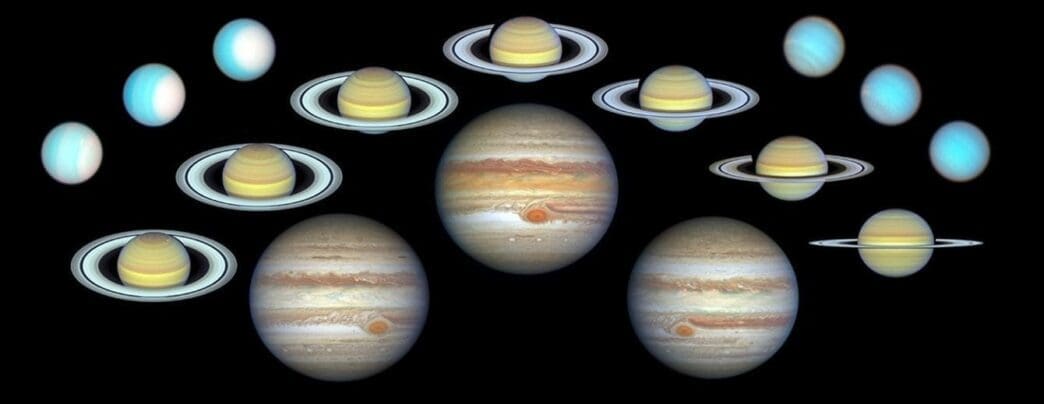In a remarkable feat of continuous observation, NASA’s Hubble Space Telescope has completed ten years of detailed monitoring of the solar system’s outer planets. This long-term study has been vital in enhancing our understanding of Jupiter, Saturn, Uranus, and Neptune, surpassing initial findings made by the Voyager missions in the late 20th century.
NASA’s Voyager mission encountered Neptune in 1989, marking a significant milestone as it completed the first close-up exploration of the solar system’s four giant outer planets. Since their 1977 launch, Voyagers 1 and 2 unveiled complexities in Jupiter, Saturn, Uranus, and Neptune that were previously unknown. However, NASA’s Hubble Space Telescope, through its OPAL program, has advanced these discoveries by providing long-term baseline observations to study atmospheric dynamics and evolution.
According to Amy Simon of NASA’s Goddard Space Flight Center, the Voyager data, although groundbreaking, only scratched the surface of these planets’ mysteries. Hubble’s OPAL program, with its high spatial resolution and image stability, offers crucial insights into cloud structures and atmospheric motions by spanning wavelengths from ultraviolet to near-infrared.
Over nearly a decade, OPAL has captured the outer planets’ dynamic atmospheres in enhanced color images. These observations allow scientists to track seasonal changes with an unprecedented level of detail. The program’s continuous monitoring of Jupiter’s turbulent atmosphere, for example, has closely followed the evolution of the Great Red Spot and other atmospheric phenomena over the years.
For Saturn, the OPAL program has provided insights over a quarter of its 29-year orbit around the Sun. By observing changes in the tilt of Saturn’s rings and atmospheric colors, Hubble extends the legacy of the Cassini mission while uncovering seasonal shifts on this gas giant.
Uranus, uniquely tilted on its axis, undergoes radical seasonal variations over its 84-year orbit. OPAL’s data has been essential in observing storm development and the brightening of the polar cap—a phenomenon expected to peak as Uranus approaches its summer solstice.
Neptune, the most distant of these outer planets, has also been the subject of OPAL’s scrutiny. The program has documented the lifecycle of large dark spots that form and dissipate over several years, offering vital clues to Neptune’s atmospheric dynamics.
The OPAL program’s decade-long observations have become an indispensable resource for planetary scientists, contributing to over 60 scientific publications and integrating data from other space missions and ground-based observations. This comprehensive dataset aids in understanding not only our solar system’s giants but also similar exoplanets orbiting other stars.
As Hubble’s OPAL program enters its second decade, it continues to provide invaluable data for the scientific community, deepening our understanding of the outer planets and their atmospheric phenomena. The ongoing success of the Hubble Space Telescope underscores its significance as a vital tool in advancing space exploration and research.
Source: Science.nasa ˙ Youtube







